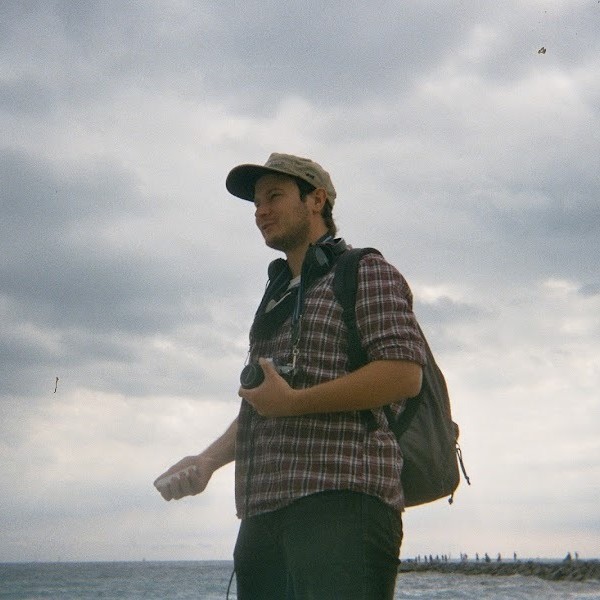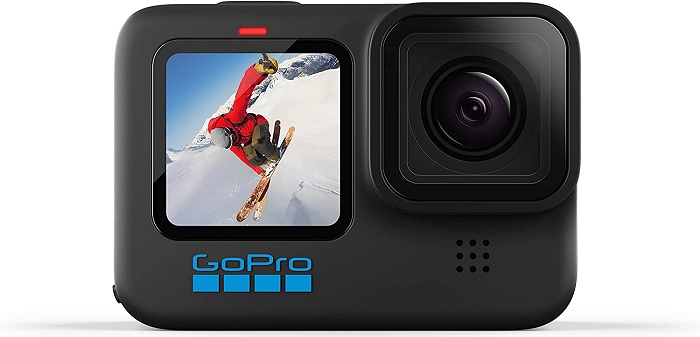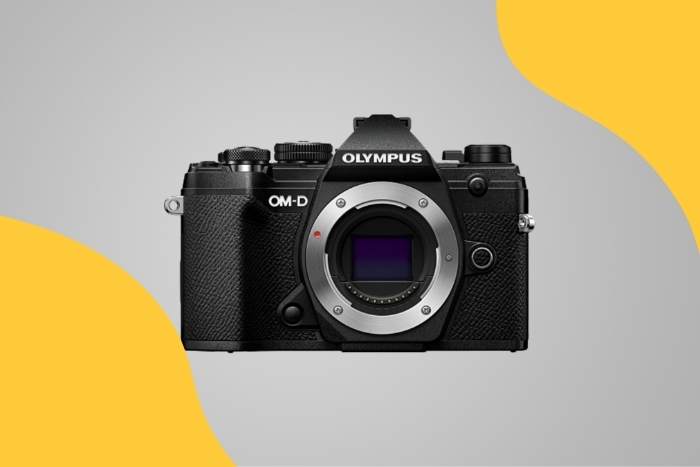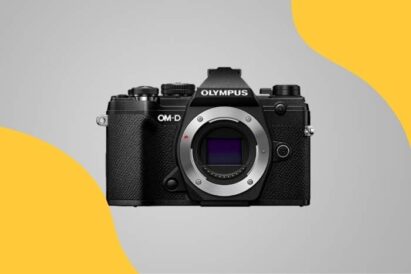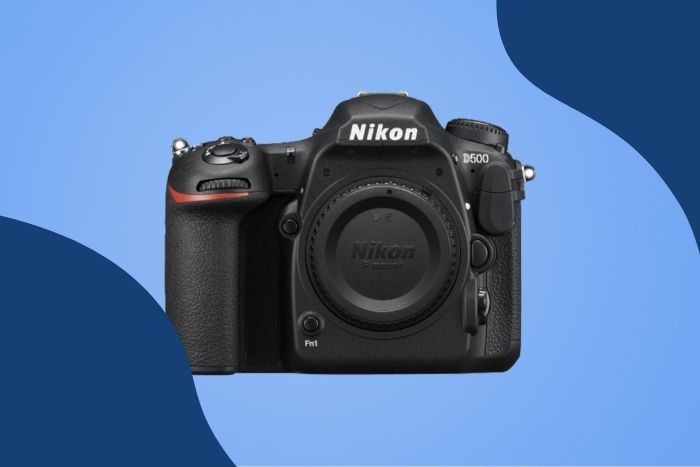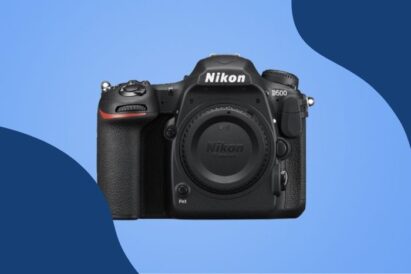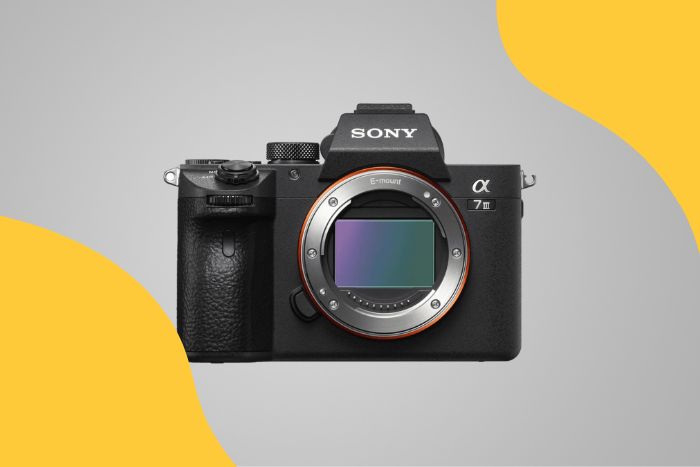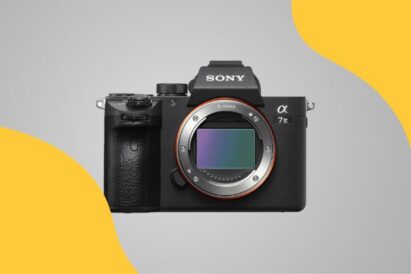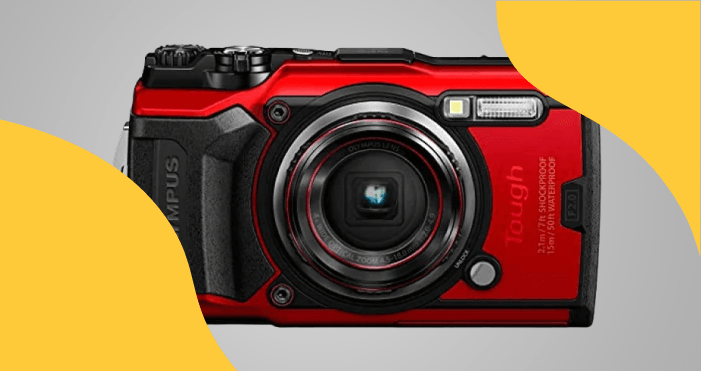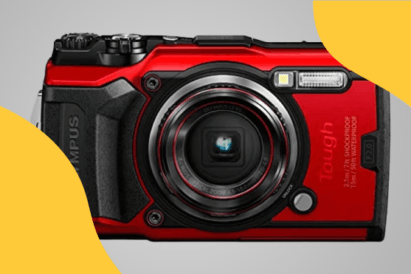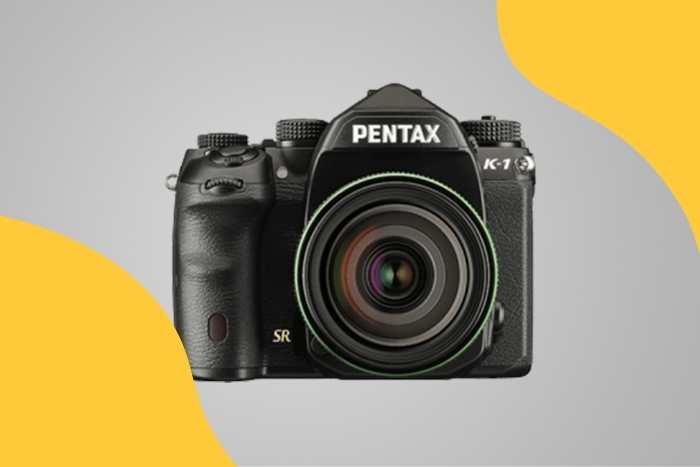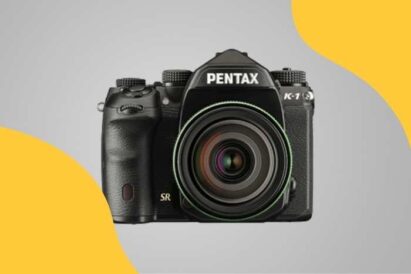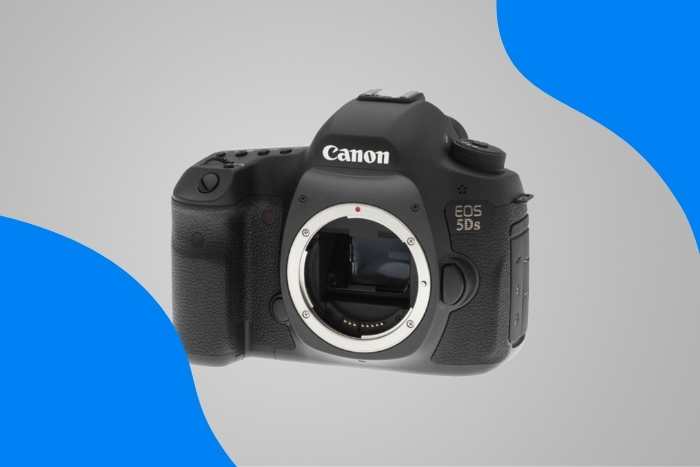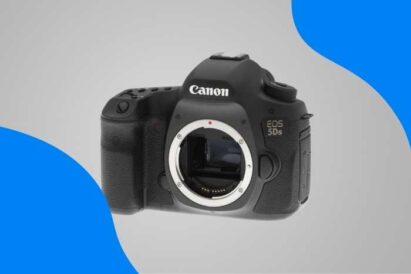Fewer experiences give you a greater feeling of liberation than hiking in the great outdoors. Being out in the elements and seeing all of nature’s glory brings your soul to life. But the fabulous sights soon disappear, and you’re back at your desk. That’s why you need a good hiking camera.
The best camera for hiking lets you capture everything you see when hiking and backpacking. It captures the sights and brings emotions and excitement back when you want them. But it doesn’t get it your way or slow you down.
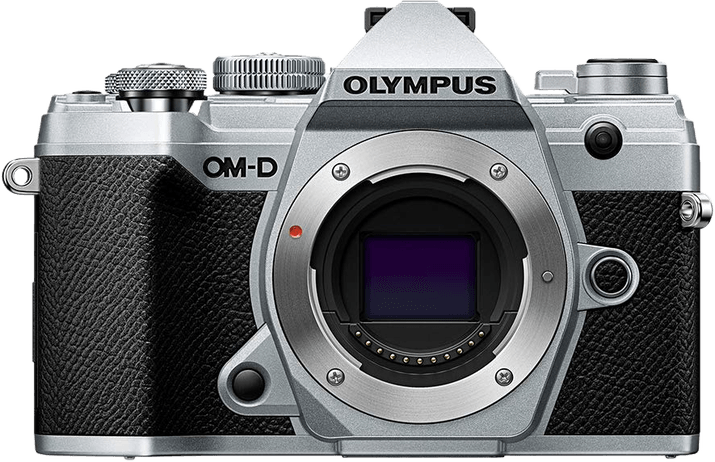
Olympus OM-D E-M5 Mark III
The CameraReviews team has put together a list of excellent cameras that are great for hiking and backpacking. We have cameras of all kinds, including DSLR, compact, and mirrorless cameras. There’s something for everyone, so you can find the best camera for hiking.
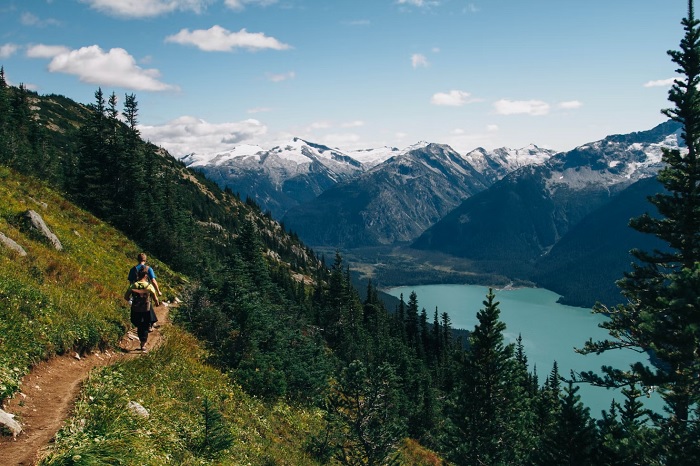
What is the Best Camera for Hiking and Backpacking?
If you want to capture the incredible sights of your next hiking expedition, you need a camera that’s up to the job. The weather can change quickly at high altitudes, so you need a rugged camera. A weather-sealed camera is ideal.
You also want a camera that will capture your glorious surroundings. That’s why image quality is so important. Size and weight are two other important considerations for a backpacking camera. You don’t want a heavy camera to slow you down when hiking and backpacking.
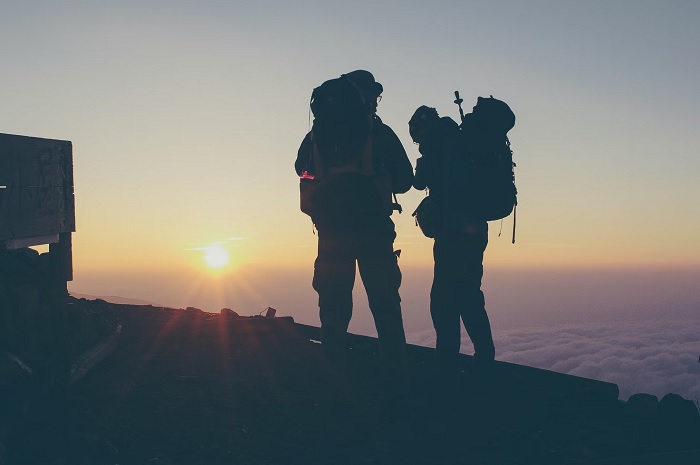
17 Best Cameras for Hiking and Backpacking in Detail
It’s time to set off on our journey to find the best camera for hiking and backpacking. We’ll find cameras for beginners and experienced photographers. There will be small cameras that fit in your backpack. And we’ll see larger cameras that can withstand a mountain hike.
1. Olympus OM-D E-M5 Mark III

| Camera Type |
Camera Type
|
| Megapixels |
Megapixels
20 MP |
| Sensor Format |
Sensor Format
|
| Sensor Size |
Sensor Size
17.4 x 13 mm
|
| Frame Rate |
Frame Rate
30 fps |
| Autofocus Points |
Autofocus Points
121 |
- 50 MP High Res Shot mode
- 30 fps continuous shooting speed
- Up to 6.5 stops of in-body stabilization with certain lenses
- Excellent weather sealing
- Articulating screen for angled shots
- Excellent 4K Ultra HD and DCI video
- Only 10 fps with AF tracking
- Complicated Olympus menus
- No headphone out
- No video log profile for dynamic range or colors
- An average battery life
The Olympus OM-D E-M5 Mark III is our top pick for the best hiking camera. It has a compact and robust camera body. It’s packed full of features backpackers will love. And the performance is excellent.
The OM-D E-M5 Mark III is a micro four thirds camera. That means it has a smaller sensor than APS-C and full frame cameras. That means they have compact bodies ideal for traveling and hiking. And Olympus ensures you don’t lose image quality with a smaller sensor. You still get 20 MP image resolution.
If you need more power from your camera, the camera has High-Res Shot mode. It takes images with a resolution of 50 MP for professional-grade images. You do need a tripod to shoot in this mode. But it’s ideal for high-quality landscape photography.
You don’t always need a tripod with the Olympus OM-D E-M5 Mark III. It has 5-axis in-body image stabilization. It gives you 5 stops of compensation, reducing camera shake when shooting by hand.
You can also shoot hiking footage with 4K video quality. And there’s a fantastic burst mode for continuous shooting. Pro Capture mode gives you a burst rate of 30 fps. And the shutter is completely silent. It’s ideal for wildlife photography.
Autofocus is another great feature. And you also need to know this camera is completely weather-sealed and protected against the elements. The battery life isn’t great. But you know it’s up to the challenge of your next adventure.
2. Pentax K-70
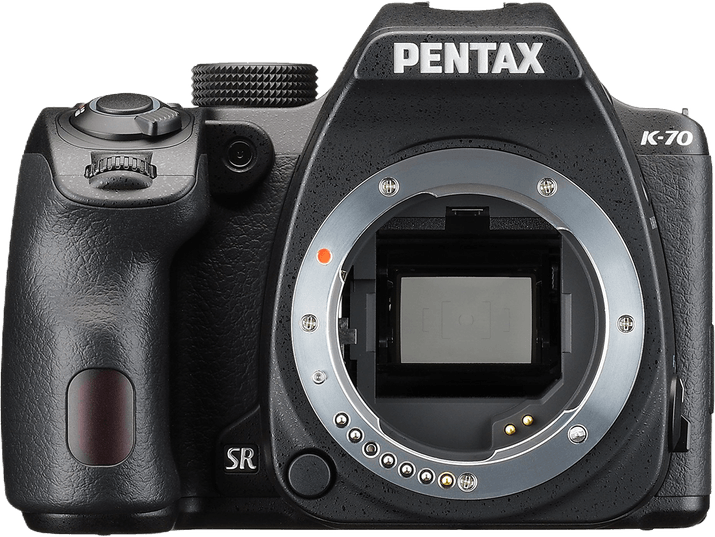
| Camera Type |
Camera Type
|
| Megapixels |
Megapixels
24 MP |
| Sensor Format |
Sensor Format
|
| Sensor Size |
Sensor Size
23.5 x 15.6 mm
|
| Frame Rate |
Frame Rate
6 fps |
| Autofocus Points |
Autofocus Points
11 |
- Brilliant low-light performance with a wide ISO range
- Excellent image quality and sensor
- Built-in image stabilizer reduces camera shake
- High-quality pentaprism viewfinder
- Durable body with full weather sealing
- Limited AF system for fast-moving subjects
- Slow buffering when shooting in RAW
- Slow max burst speed of 6 fps
- Poor connecting Wi-Fi app
- Only Full HD video, no 4K recording
The Pentax K-70 was made for a life in the wild. It’s a durable DSLR camera that produces fantastic images. It’s a perfect option for beginners and anyone buying their first hiking camera. Combining toughness and performance, it’s perfect for outdoor photography.
Equipped with an APS-C CMOS sensor, the Pentax K-70 has an image resolution of 24.2 MP. That’s strong image quality for a camera at this level. The colors are natural and vibrant. And there’s an impressive dynamic range. The low-light performance is excellent too, with an ISO range from 100 to 204,800.
The autofocus system uses 11 AF points. It locks and tracks, but it is limited for sports or action photography. But the Pentax K-70 does have a built-in shake reduction mechanism. It reduces camera shake when shooting from hand, keeping your photos sharp.
Pentax has a reputation for robust DSLR cameras. And the K-70 is their best DSLR camera for less experienced photographers. It’s completely weather sealed and dustproof, able to endure wet and wild conditions. The Pentax K-70 is rugged and produces fantastic images outdoors. And it’s an affordable DSLR camera.
3. Olympus Tough TG-6
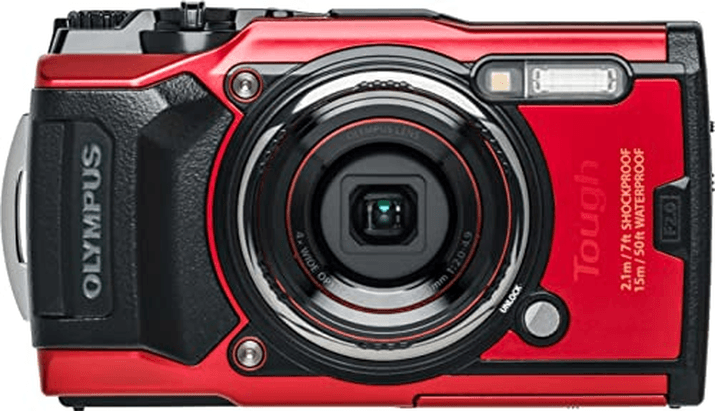
| Camera Type |
Camera Type
|
| Megapixels |
Megapixels
12 MP |
| Sensor Format |
Sensor Format
|
| Sensor Size |
Sensor Size
6.17 x 4.55 mm
|
| Frame Rate |
Frame Rate
20 fps |
| Autofocus Points |
Autofocus Points
25 |
- Very strong and durable body
- Waterproof to 50 ft (15.5 m)
- RAW file shooting capabilities
- Excellent macro shooting
- Smooth 4K video recording
- Only 12 MP image resolution
- No fully manual controls
- No touchscreen
- Annoying notifications with Wi-Fi app
Compact cameras don’t come any tougher than the Olympus Tough TG-6. It’s tough by name and tough by nature. It’ll take whatever nature can throw at it. And it will still give you fantastic photos and videos. It’s small enough for the side pocket of your backpack, making it an ideal camera for hiking.
The Olympus Tough TG-6 has a strong camera body. It’s dustproof, shockproof, and crushproof. It can take a beating. And importantly for hikers, it’s a waterproof camera. And not only splashproof. It works underwater to depths of 50 ft (15 m) with five underwater shooting modes.
The 1/2.3-inch sensor has a resolution of 12 MP. That isn’t much compared to other cameras on this list. But you can still expect high-quality images. The fixed lens has excellent optical quality with a bright f/2.0 max aperture. And it gives you an 8x zoom range. The macro shooting modes are fun too.
Few users will find fault with the video capabilities. You can record in 4K for detailed and smooth footage. And you can change to Full HD for a faster frame rate of 120 fps. You can turn this footage into fantastic slow-motion videos.
The Olympus Tough TG-6 has the handy dimensions of other compact cameras. But this model is more rugged than most. It’ll survive anywhere, and it’s a waterproof camera you can rely on. And the battery life is great too. It has to be considered one of the best cameras for hiking and backpacking.
4. Nikon D7200
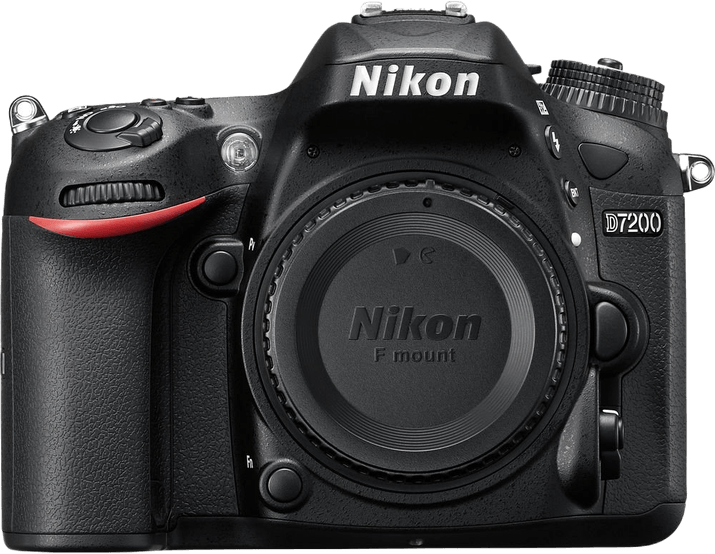
| Camera Type |
Camera Type
|
| Megapixels |
Megapixels
24.2 MP |
| Sensor Format |
Sensor Format
|
| Sensor Size |
Sensor Size
15.6 x 23.5 mm
|
| Frame Rate |
Frame Rate
6 fps |
| Autofocus Points |
Autofocus Points
51 |
- Fantastic 51-point AF system
- Strong low-light performance and dynamic range
- High-quality optical viewfinder
- Extra-capacity dual SD cards slots
- Robust, weather-sealed body
- Very slow 6 fps max burst speed
- Highest expandable ISO settings are only available in black and white
- LCD screen is not fully articulating
- No 4K video and limited video features
No matter what you’re shooting, you can’t go wrong with a Nikon DSLR. And the Nikon D7200 is the best camera for hiking from their DSLR series. The features and performance are excellent. But it’s usable, rugged, and affordable.
Nikon DSLRs are all about reliability. And you know you can rely on the D7200 for its superb image quality. It houses a 24.2 MP DX-format CMOS sensor, giving you bright and detailed photographs.
You have solid low-light performance with an ISO range from 100 to 25,600. And you can extend that to 102,400. But the top settings are only available for black and white.
The Nikon D7200 has a fantastic autofocus system. It uses 51 AF points across the screen to lock and track your subjects. The burst mode isn’t record-breaking with only 6 fps. But both features will help with wildlife photography if you see any animals on your trek.
It isn’t the lightest camera. But the D7200’s durable, weather-sealed body makes it an ideal camera for outdoor photography. The battery life is tremendous. And it has Nikon’s F-mount for interchangeable lenses. Nikon’s F lens series gives you thousands of lenses to choose from.
5. Panasonic Lumix G95
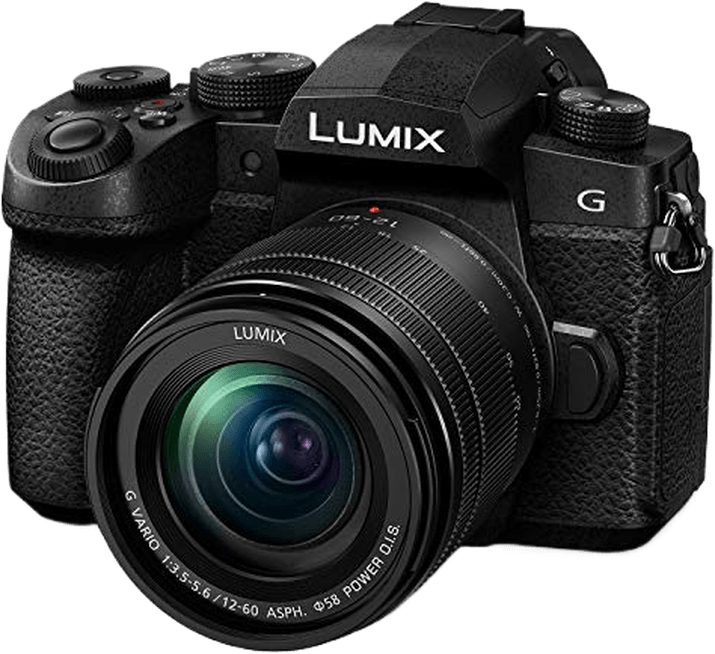
| Camera Type |
Camera Type
|
| Megapixels |
Megapixels
20 MP |
| Sensor Format |
Sensor Format
|
| Sensor Size |
Sensor Size
17.3 x 13 mm
|
| Frame Rate |
Frame Rate
9 fps |
| Autofocus Points |
Autofocus Points
49 |
- 5-axis sensor-sift image stabilization
- Fully articulating touchscreen LCD
- Sharp 4K video and photos
- Unlimited recording time
- Weather-sealed camera body
- Large for a Micro Four Thirds camera
- 4K recording applies a 1.25x crop
- No autofocus during high frame-rate video capture
- Occasional rolling shutter issues in 4K
- It doesn’t include a standalone charger
The Panasonic Lumix G95 gives you performance in photography and video making. It’s a rugged micro four thirds camera. And it’s the best backpacking camera for multimedia creators. You have plenty of great lenses to choose from and it won’t break the bank.
The G95 is a mirrorless camera with a micro four thirds sensor. It’s small but packs a punch with a resolution of 20.3 MP. And the 5-axis image stabilization helps keep your photos crisp. It’s a handy feature if you don’t have room for a tripod in your camera bag.
The video specs make the Panasonic Lumix G95 the best camera for hiking videos. You have 4K quality with a choice of frame rates. You can go for 24 or 30 fps. And you can shoot high-speed videos at 60, 90, or 120 fps. You’ll have incredible slow-motion videos from your backpacking adventures.
There’s a microphone jack for external audio recording. And USB charging is handy if you need to power up in a hostel or hotel. You can transfer and share images on the road using Wi-Fi connectivity. And the G95 is weather sealed, so you don’t need to worry about the next rain shower.
6. Sony a7 II
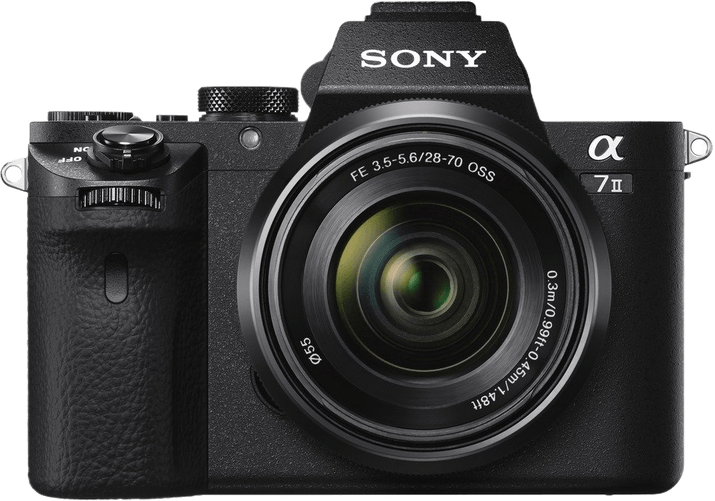
| Camera Type |
Camera Type
|
| Megapixels |
Megapixels
24.3 MP |
| Sensor Format |
Sensor Format
|
| Sensor Size |
Sensor Size
23.9 x 35.8 mm
|
| Frame Rate |
Frame Rate
5 fps |
| Autofocus Points |
Autofocus Points
117 |
- Excellent built-in image stabilization
- Fast and responsive AF with subject tracking
- Low noise at high ISO settings
- Weather sealed and dust-resistant
- Handy Wi-Fi connectivity
- Expensive
- Slow 5 fps burst mode
- A bit heavy for a mirrorless
- Disappointing battery life
- No 4K video recording, only Full HD
The Sony a7 II isn’t Sony’s latest release in their alpha series. But it remains a fantastic mirrorless camera. And it’s the best full frame mirrorless camera for hiking. Full frame mirrorless cameras don’t come cheap. But the a7 II is on the more affordable side of the scale.
Full frame mirrorless cameras are known for their image quality. And the Sony a7 II is a prime example. It doesn’t have the record-breaking resolutions of more recent Sony Alpha models. But 24.3 MP from the full frame sensor looks fantastic. And the larger image sensor means better a dynamic range.
It’s an excellent camera for landscape photography. And it has 5-axis image stabilization so you can shoot without a tripod. And the camera has lens compensation that reduces chromatic aberration and distortion. You’re guaranteed crystal clear images.
The autofocus system still holds up against newer models. It combines 117 phase detection and 25 contrast detection points. The screen coverage is nearly 100%. And it’s responsive and tracks moving subjects. It’s ideal for capturing wildlife or mountain activities.
The Sony a7 II is weather sealed, as a good backpacking camera should be. And you have a bright electronic viewfinder and articulating LCD screen. Wi-Fi connectivity is another handy feature for hikers and backpackers.
7. Nikon Z50
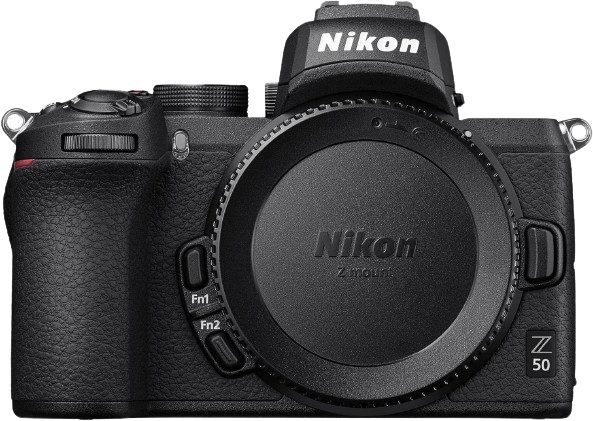
| Camera Type |
Camera Type
|
| Megapixels |
Megapixels
21 MP |
| Sensor Format |
Sensor Format
|
| Sensor Size |
Sensor Size
23.5 x 15.7 mm
|
| Frame Rate |
Frame Rate
11 fps |
| Autofocus Points |
Autofocus Points
209 |
- A more affordable mirrorless option
- Nice to handle and use
- Relatively lightweight and not too bulky
- Solid 4K video performance
- 20.8 MP sensor resolution is lower than many close competitors
- Poor battery life
- Only one memory card slot
- Limited native APS-C lenses
As well as their fantastic range of DSLR cameras, Nikon also has some excellent mirrorless cameras. And their Nikon Z50 is one of the best cameras for hiking and backpacking. It will set you back more than the D7200, but it’s lighter and more compact. And it has excellent mirrorless features.
The image quality is fabulous. 20.9 MP doesn’t sound like much, but the detail and colors are vivid and true-to-life. The color rendition is perfect for natural and landscape photography. And the 100 to 51,200 ISO range allows you to shoot at dawn and dusk. That’s good news for wildlife photographers.
The hybrid phase and contrast autofocus is another feature wildlife enthusiasts will like. It’s responsive even in low light. And it tracks moving subjects like woodland creatures and critters. You also get full AF support with the 11 fps burst mode.
The 4K video is another highlight of the Z50. And the rotating touchscreen and audio port make it a brilliant hiking camera for vloggers. It’s a portable, weather-sealed camera. Nikon’s Z-mount lenses aren’t as numerous as the F-mount series. But you still have some excellent glass options.
8. Sony a6400
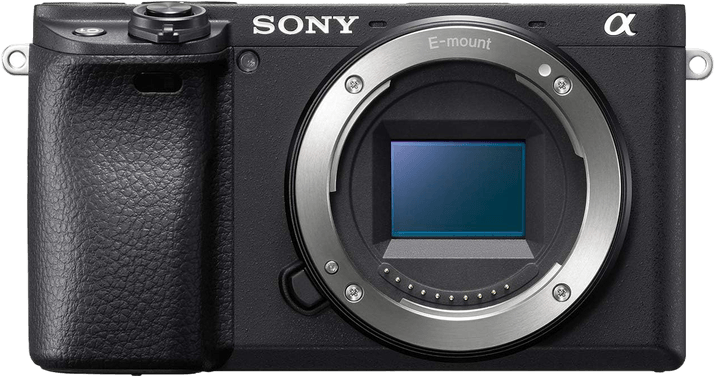
| Camera Type |
Camera Type
|
| Megapixels |
Megapixels
24.2 MP |
| Sensor Format |
Sensor Format
|
| Sensor Size |
Sensor Size
15.6 x 23.5 mm
|
| Frame Rate |
Frame Rate
11 fps |
| Autofocus Points |
Autofocus Points
425 |
- Superb image quality for APS-C
- Good low-light performance
- Compact camera body
- No time limit for recording video
- No in-camera RAW image editing
- No in-body image stabilization
- Screen tilts but no further articulation
- Complicated menu system
The Sony a6400 isn’t Sony’s latest model. But it remains one of their most popular APS-C mirrorless cameras. And with a compact and durable body, the a6400 is a brilliant option for hiking and backpacking.
It’s a compact camera compared to Sony’s full frame models. But the APS-C sensor still gives you a resolution of 24.2 MP and fantastic image quality. You get a large ISO range, from 100 with the top end expandable to ISO 102,400. And you have a burst of 11 fps at full resolution.
The autofocus system is still top of the range. It combines 425 contrast detection and 425 phase detection points to give you incredible AF performance. It also has eye detection for portraits when you’re on the trail. Eye detection also works on animals if you want to snap some wildlife.
The Sony a6400 is a great camera for making all types of hiking content. The video quality is terrific, with 4K shot at 30 fps. And you can shoot slow-motion footage at 120 fps. And the tilting touchscreen makes it easier to create vlogs from the trail.
The Sony a6400 is the best mirrorless camera if you need something smaller. It’s a weather-sealed camera with outstanding performance. And it’s far more affordable than the full frame camera options. You also have a good selection of Sony lenses to go with it.
You can check out our comparison of the Sony a6400 vs Nikon Z50, Sony a6100, or Fujifilm X-S10 next!
9. Canon PowerShot G1 X Mark III
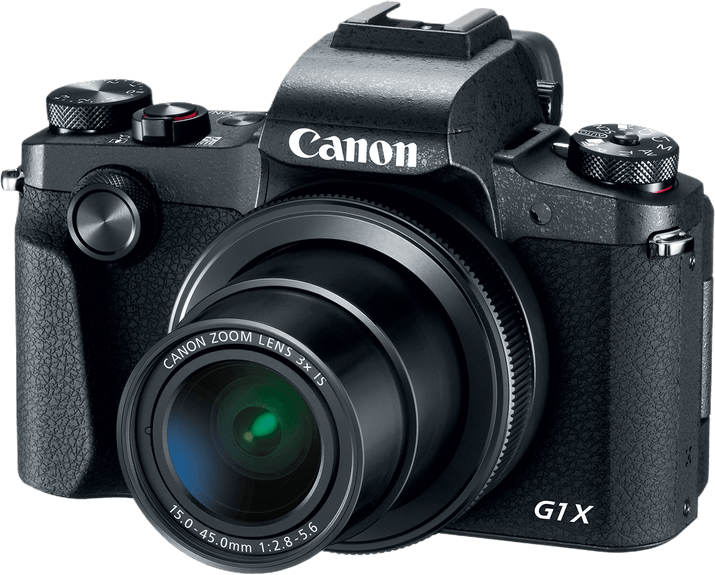
| Camera Type |
Camera Type
|
| Megapixels |
Megapixels
20 MP |
| Sensor Format |
Sensor Format
|
| Sensor Size |
Sensor Size
13.2 x 8.8 mm
|
| Frame Rate |
Frame Rate
12 fps |
| Autofocus Points |
Autofocus Points
49 |
- Excellent image quality and sensor
- Good ISO range and for low light
- 3x optical zoom for extra magnification
- Bright vari-angle LCD touchscreen
- Compact and robust body with weather sealing
- The autofocus is basic for a mirrorless camera
- Max aperture of f/5.6 when at full zoom range
- No 4k video, max quality is Full HD
- Disappointing battery life
The Canon PowerShot G1 X Mark III is an APS-C camera disguised as a compact camera. You’ll have no problems fitting it into your pack. And it’s ideal for multimedia creators who love the outdoors.
The PowerShot G1 X Mark III might look like a point-and-shoot camera. But it has a powerful APS-C sensor that gives you 24.2 MP of resolution. And you get an ISO range of 100 to 25,600 for low-light photography.
A zoom lens is always a bonus in backpacking cameras. And the PowerShot G1 X Mark III has a brilliant 3x optical zoom lens attached. You also have a rotating touchscreen for tricky shots. And there’s an accurate and vibrant electronic viewfinder.
The video is only Full HD. But it does record at 60 fps, so the footage is clear and smooth. You also have a handy 7 fps burst mode. And the image stabilization works with photos, videos, and continuous shooting.
The Wi-Fi and Bluetooth connectivity is ideal for travelers. And the weather sealing gives you peace of mind when shooting outdoors. The Canon PowerShot G1 X Mark III is a solid all-rounder that’s small enough to be one of the best cameras for hiking and backpacking.
10. Panasonic Lumix ZS200
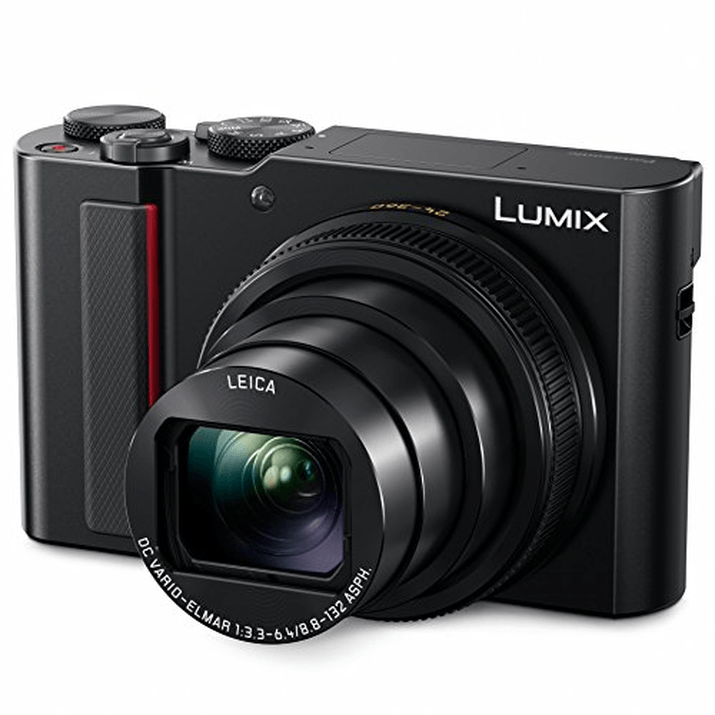
| Camera Type |
Camera Type
|
| Megapixels |
Megapixels
20 MP |
| Sensor Format |
Sensor Format
|
| Sensor Size |
Sensor Size
13.2 x 8.8 mm
|
| Frame Rate |
Frame Rate
10 fps |
| Autofocus Points |
Autofocus Points
49 |
- Low price
- Excellent quality 4K video
- Incredibly versatile focal length range
- 5-axis in-body image stabilization
- Unmatched battery life
- High maximum aperture
- Fixed rear screen
- Not weather sealed
- 1.5x 4K crop factor
- AF occasionally hunts in video mode
The Panasonic Lumix ZS200 remains one of the top point-and-shoot cameras for many photographers. And the performance and features make it one to consider if you want the best cameras for hiking.
It has a 1-inch sensor. It’s small but gives you 20.1 MP of resolution for stunning image quality. There’s a max ISO of 12,800 for darker situations. And you have built-in image stabilization that reduces camera shake in the sensor and in the lens.
The Lumix ZS200 has one of the best zoom lenses on any compact camera. It’s a fixed Leica lens, so there’s no issue with quality. And it gives you a phenomenal 15x zoom range. And it’s an optical zoom, so there’s no image deterioration when you zoom in.
The video features are just as impressive. You have 4K video at 30 fps. And there’s Lumix 4K Photo. It allows you to select single frames from video footage and use them as individual photos. It’s the ultimate continuous shooting mode.
The features are fantastic, just like the battery life. But there’s no weather sealing, so you’ll have to be careful when hiking with this camera. If you keep it safe, you’ll also have creative shooting modes and Wi-Fi connectivity.
11. Olympus OM-D E-M10 Mark IV
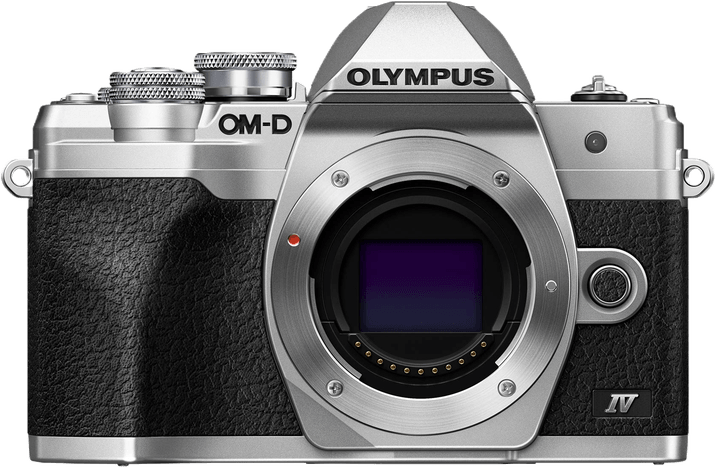
| Camera Type |
Camera Type
|
| Megapixels |
Megapixels
20 MP |
| Sensor Format |
Sensor Format
|
| Sensor Size |
Sensor Size
13 x 17.4 mm
|
| Frame Rate |
Frame Rate
15 fps |
| Autofocus Points |
Autofocus Points
121 |
- Affordable
- Very beginner-friendly
- Excellent image quality
- Built-in image stabilization for video and low light
- Endless list of compatible lenses
- Excellent 4K video features
- Small sensor
- AF has slow continuous shooting
- Contrast-detection AF system is slower than phase-detection systems
- No microphone and headphone jacks
- Plastic body and isn't weather sealed
Micro four thirds cameras make excellent cameras for hiking and backpacking. And the Olympus OM-D E-M10 Mark IV is another fantastic example. It’s packed with functions and features. But it’s still small enough for your hiking pack.
Don’t worry about sensor size. This micro four thirds sensor gives you sensational image quality from a 20 MP resolution. And you get full image resolution when shooting at 15 fps in burst mode. You don’t need to worry about camera shake as it has built-in 5-axis image stabilization.
The 4K video looks great. And there’s no problem shooting handheld because the in-camera image stabilization works with video too. The rotating screen and selfie mode help with self-portraits and vlogs on the road.
Olympus has a wide range of fabulous lenses for their MFT cameras. And you can select different ones depending on the type of hiking photography you want to do. The Wi-Fi connectivity and USB charging are both features trekkers will appreciate.
12. GoPro Hero 10
Best Action Camera
We all know GoPros are the best action cameras on the market. But is the GoPro Hero 10 a good camera for backpacking? Yes, absolutely. It doesn’t give you the photography options of an interchangeable lens camera. But a GoPro camera produces unique media that’ll spice up your next hiking adventure.
The GoPro Hero 10 isn’t great for portrait, landscape, or wildlife photography. But the image quality is fantastic. The images have a resolution of 23 MP. And the fixed lens gives you clear wide-angle shots.
The video quality is even more impressive. You get 5.3K video at 60 fps. And you can shoot 2.7K slow-motion videos. You can also take stills from the 5.3K footage for 15.8 MP still photos. And the HyperSmooth 4.0 image stabilization keeps everything sharp.
The compact body of a GoPro gives you a unique opportunity for media creation. You can attach the camera to a helmet for biking or climbing, giving you fantastic POV action shots. And the GoPro Hero 10 is a fully waterproof camera, so you can go diving or kayaking with it.
13. Canon EOS 90D
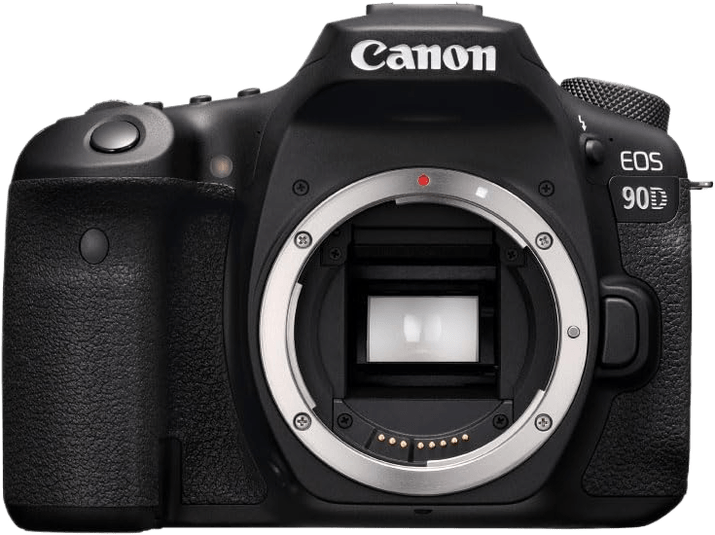
| Camera Type |
Camera Type
|
| Megapixels |
Megapixels
33 MP |
| Sensor Format |
Sensor Format
|
| Sensor Size |
Sensor Size
22.3 x 14.9 mm
|
| Frame Rate |
Frame Rate
10 fps |
| Autofocus Points |
Autofocus Points
45 |
- Excellent 32.5 MP APS-C sensor
- Dual Pixel AF with eye detection
- Decent frame rate of 10 fps
- Good, 1,300-shot battery life
- Live View and 4K/30p Ultra HD video
- Unreliable autofocus when using the optical viewfinder
- 4K video has a soft focus
- No in-body image stabilization
- Limited video codecs and frame rates
The Canon EOS 90D is one of the most powerful APS-C sensor cameras. It’s a well-rounded DSLR camera, pushing the boundaries of crop sensor DSLR cameras. It will stretch your budget. But you’ll be able to shoot fabulous landscapes, action shots, and wildlife photography with the Canon EOS 90D.
The image quality is one of the main selling points for the Canon EOS 90D. You get an incredible 32.5 MP resolution from the APS-C sensor. It can go toe-to-toe with any full frame camera. And the max ISO of 25,600 gives you options for low-light photography.
The video specs are just as impressive. The 4K video is smooth at 30 fps. And you can shoot slow-motion hiking videos at 120 fps. There’s a slight dip in quality at the higher frame rate. But it’s still Full HD video. And there’s a burst mode that shoots at 10 fps.
The autofocus system is excellent. It’s responsive and tracks moving subjects even in darker situations. The Canon EOS 90D has environmental sealing. It’ll stay protected against dust, humidity, and light rain. But you’ll need to take care in harsher conditions. The 1300-shot battery life is excellent.
14. Pentax K-1
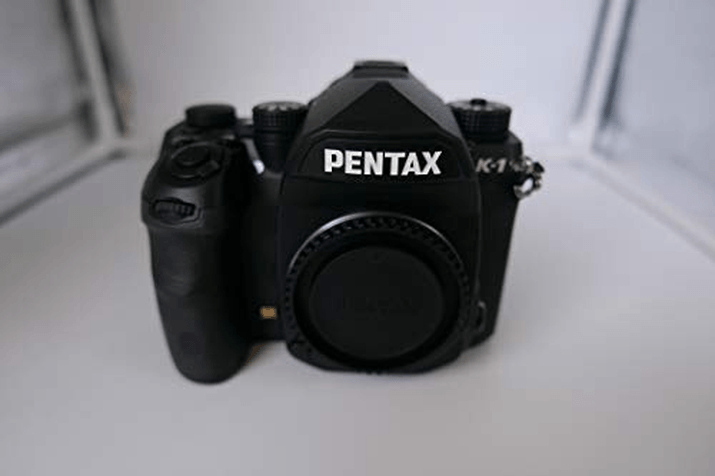
| Camera Type |
Camera Type
|
| Megapixels |
Megapixels
36.4 MP |
| Sensor Format |
Sensor Format
|
| Sensor Size |
Sensor Size
24 x 35.9 mm
|
| Frame Rate |
Frame Rate
4.4 fps |
| Autofocus Points |
Autofocus Points
33 |
- Powerful 36.2 MP full frame sensor
- Wide ISO range, top-notch in low light
- Built-in 5-axis image stabilization
- Durable, weather-sealed body
- Long-lasting battery life
- Slow burst speed of 4.4 fps
- No touchscreen controls
- Heavy camera body
- No 4K video recording
The Pentax K-1 is a powerful DSLR camera that’s ideal for outdoor photography. It’ll stretch your budget to its limit. But it’s a popular camera with landscape and nature photographers all over the world. It’s a durable beast that can handle any adventure.
It’s a full frame camera with a resolution of 36 MP. That’ll give you stunning image quality. The dynamic range is fantastic, with detail in dark and light areas. And the colors are vibrant and realistic. The image stabilization also means you don’t need to pack your tripod.
The ISO options are excellent, giving you a range from 100 to 819,200. And you won’t experience any digital noise until you hit the top settings. The video quality does let the Pentax K-1 down. The max resolution is Full HD, so there’s no 4K.
The Pentax K-1 is a strong and durable DSLR. It’s a big unit and not the lightest camera. But it has full weather sealing for protection against the elements. It can survive and thrive in tough conditions. And it’s ideal for serious photographers who love the great outdoors.
15. Canon EOS Rebel T8i
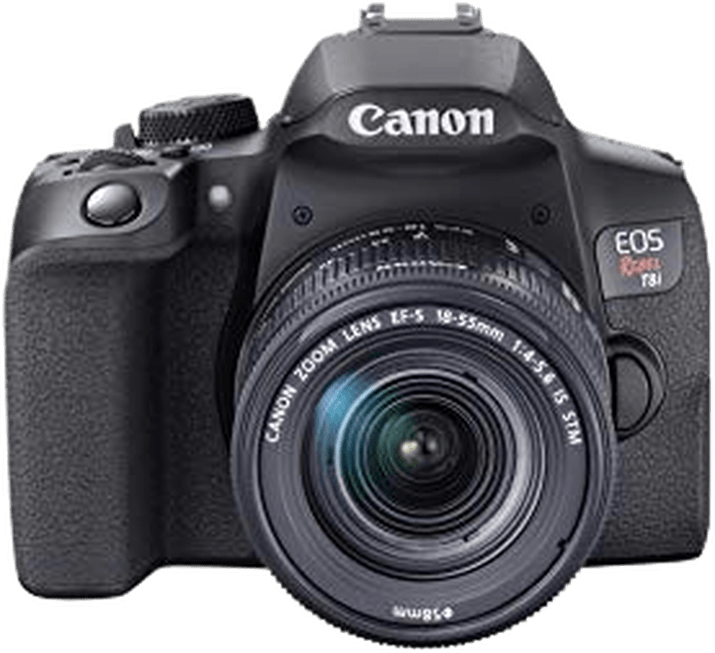
| Camera Type |
Camera Type
|
| Megapixels |
Megapixels
24 MP |
| Sensor Format |
Sensor Format
|
| Sensor Size |
Sensor Size
14.9 x 22.3 mm
|
| Frame Rate |
Frame Rate
7.5 fps |
| Autofocus Points |
Autofocus Points
45 |
- Excellent image quality
- Face and eye-detection AF
- Great ISO range and low-light performance
- 4K/25p and Full HD/120p video
- Webcam functionality and remote shooting with smartphone
- Fiddly control dials
- Less reliable AF in video mode
- Small optical viewfinder display
- Cropped 4K video
The Canon EOS Rebel T8i is one of Canon’s best DSLR cameras. It’s beginner-friendly but has the features to please more experienced photographers. And the performance will thrill any keen hiking photographer.
You get a 24.1 MP resolution from the APS-C sensor. It’s a great beginner DSLR camera, but no one will be disappointed with the image quality. The ISO range is from 100 to 12,800 and gives you some low-light shooting options.
The autofocus is excellent for a camera at this level. It uses 45 cross-type AF points that give you almost full coverage of your frame. And it has eye detection and subject tracking capabilities. You also get full AF support with the 7 fps burst mode.
The Canon EOS Rebel T8i is another strong hybrid contender. You have excellent multimedia options, with video shooting at 4K quality. The 4K does have a 24 fps frame rate. But that’ll still look fantastic on your travel blog or social media account.
The Canon EOS Rebel T8i also doubles as a webcam for livestreaming. That’s no use when you’re on the trail. But you can do travel-related livestreams from exciting new locations. The battery life is excellent. But you’ll have to take care as the Rebel T8i is not weather sealed.
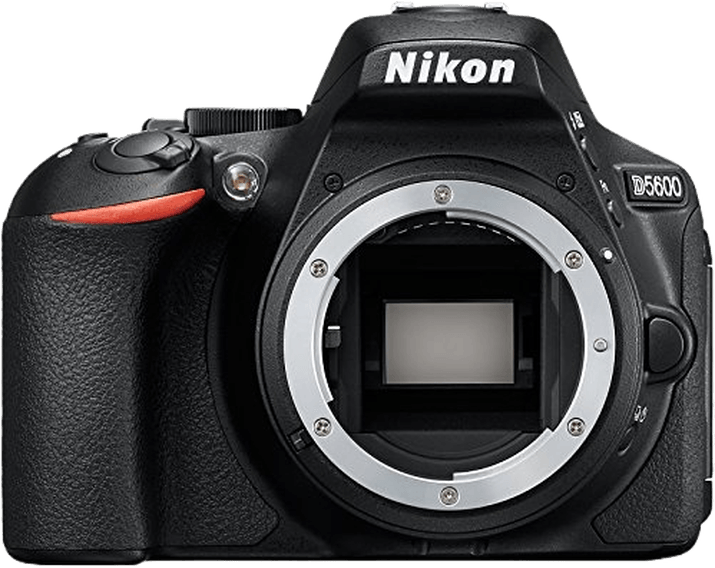
| Camera Type |
Camera Type
|
| Megapixels |
Megapixels
24.2 MP |
| Sensor Format |
Sensor Format
|
| Sensor Size |
Sensor Size
15.6 x 23.5 mm
|
| Frame Rate |
Frame Rate
5 fps |
| Autofocus Points |
Autofocus Points
39 |
- High quality images for crop sensor
- Great ISO sensitivity
- Fast 39-point AF system
- Not too bulky and nice to handle
- Autofocus isn't great in video mode
- No dual memory card slots
- No USB charging
- No Nikon Fine-Tune function to adjust AF for specific lenses
The Nikon D5600 is another fantastic DSLR from Nikon. Inexperienced photographers can hit the ground running with this camera. But it’s still suitable for experienced photographers too. The build quality is excellent, as is the photography performance.
The sensor is a DX-format APS-C sensor with a resolution of 24.2 MP. That doesn’t look record-breaking on paper. But the image quality is exceptional with clear detail and vivid colors. The max ISO of 25,600 also gives you more shooting options when natural light is low.
The video quality is limited to Full HD. And the burst rate is a sluggish 5 fps. But the battery life is extremely reliable. And you have Wi-Fi connectivity for quick and easy image sharing. The rotating touchscreen also makes capturing those tricky shots a lot easier.
The autofocus is another positive for the Nikon D5600. It has 39 focus points across the screen. And it has eye detection and subject tracking. Landscape photographers will like the built-in High Dynamic Range mode. And it has a high-quality optical viewfinder for composing perfect shots.
17. Panasonic Lumix FZ2500
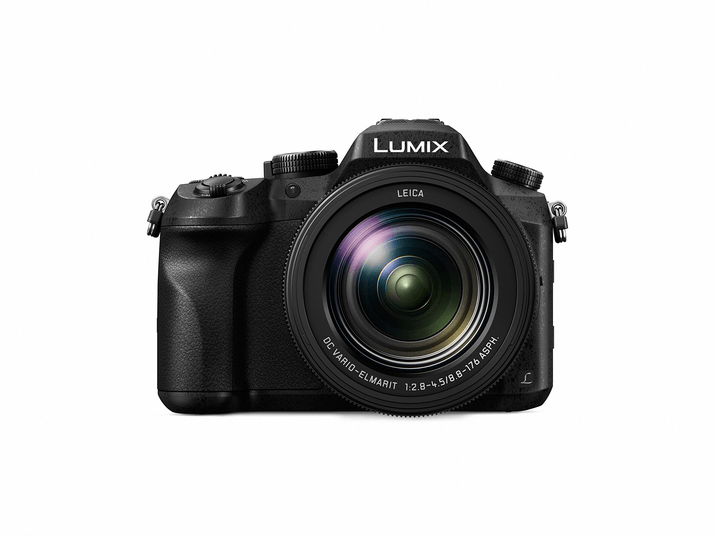
| Camera Type |
Camera Type
|
| Megapixels |
Megapixels
20 MP |
| Sensor Format |
Sensor Format
|
| Sensor Size |
Sensor Size
13.2 x 8.8 mm
|
| Frame Rate |
Frame Rate
12 fps |
| Autofocus Points |
Autofocus Points
49 |
- Excellent quality Leica lens
- 5-axis image stabilization
- Solid build quality and large grip
- Good ergonomics
- Stunning 4K video
- Yellows occasionally look greenish
- Noisy JPEGs with high ISOs
- 1.4x crop factor with 4K video
- Not weather sealed
- No USB charging
The Panasonic Lumix FZ2500 is a fantastic bridge camera you can take on your next hike. A bridge camera combines the simplicity of a point-and-shoot with the features of a DSLR. And in typical Panasonic fashion, it’s also a hybrid camera with photo and video options.
It has a 1-inch sensor with a resolution of 20.1 MP. That’s a lot of power from a small sensor, and you’ll see a big improvement from a smartphone camera. And the image quality is helped by the fixed Leica lens. The optical quality is brilliant. And you get 20x zoom capabilities.
The 4K video quality is excellent. And you also have faster frame rates for slow-motion videos. You can use the Lumix 4K Photo mode, selecting frames from 4K video to use as single images. That gives you a burst speed of 24 fps.
There are fantastic shooting modes, including three for macro photography. And there are external ports for microphones and headphones. It’s the best bridge camera on the market. The Panasonic Lumix FZ2500 is another great option for multimedia hikers.
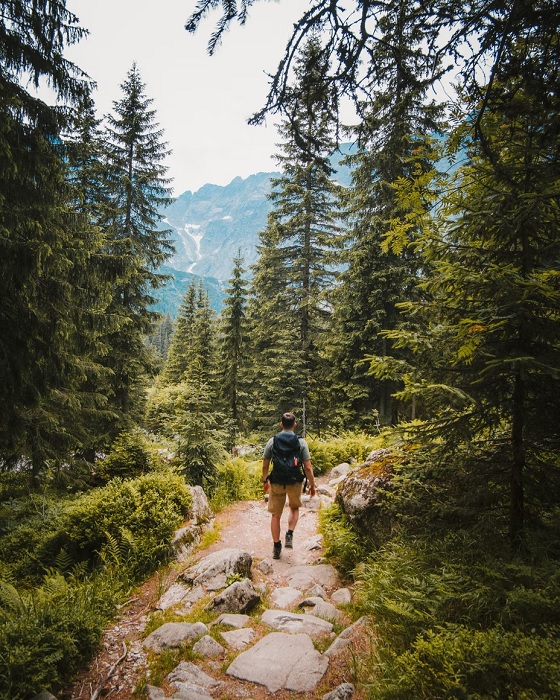
Our Verdict
We believe the Olympus OM-D E-M5 Mark III has it all. It’s strong and robust. And it’s a powerful MFT mirrorless camera. Its compact body is packed with features. The Pentax K-70 is the best DSLR choice. And the Olympus Tough TG-6 is a fantastic compact camera for hiking and backpacking.

Olympus OM-D E-M5 Mark III
Finding the best camera for hiking doesn’t have to be difficult. When you know what you need, you can narrow the options down. You need a durable camera that won’t dominate space in your trekking pack. But you still want excellent image quality.
You still have plenty of camera options. There are DSLRs, micro four thirds, and mirrorless cameras capable of joining you on your next hike in the mountains. They can take what nature throws at them and still produce fantastic images and videos.

